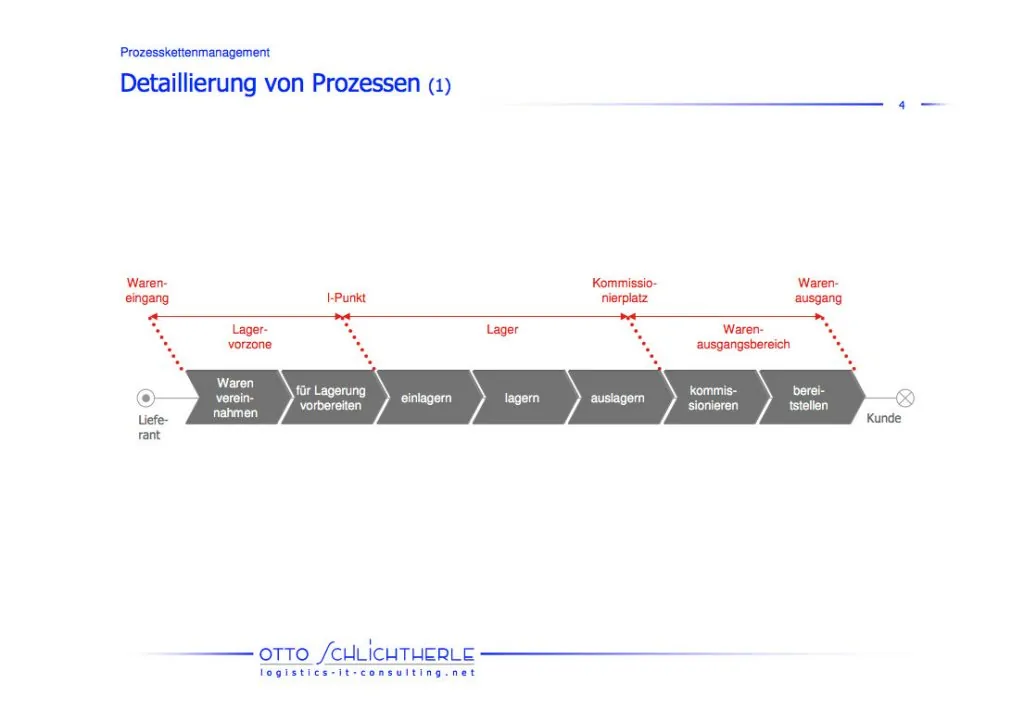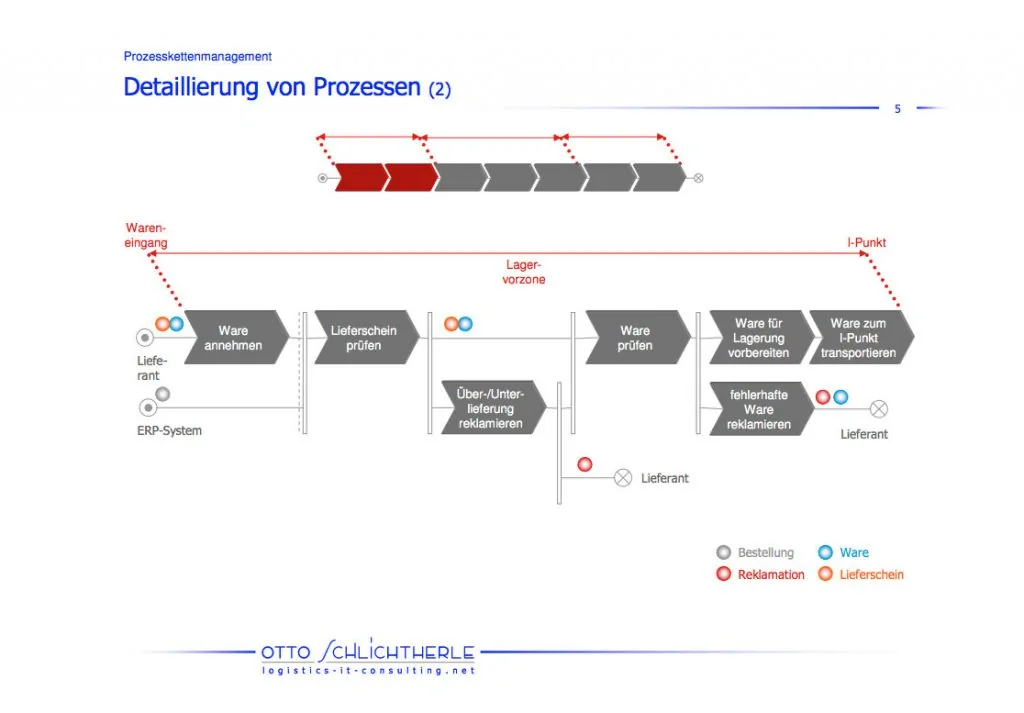Process chain management is used to organize business processes in intralogistics and other industrial segments. According to Otto Schlichtherle, Logistics IT Consulting, it combines process-oriented thinking with the alignment of processes to customer orders. Before the actual optimization, a potential analysis and a consistent optimization approach are taken into account in advance.

Process chain management generally considers individual and already running process sections of the supply chain. These sections are divided into so-called target definitions and examined. The potential analysis to be taken into account and its individual work steps show how complex process chain management can be: The requirements analysis is generally followed by a performance analysis, a process analysis, a structural analysis, and a final benchmarking using key performance indicators. After the relevant analyses and consideration of all possible process optimizations, specialists usually use an individual weakness analysis – similar to the Kaizen system. The actual process is compared with the actual process assessment, followed by practical and customer-oriented strategies for eliminating the respective weak points.
Note: Even if there are unmistakable similarities in the procedure, process chain management has nothing to do with the actual analysis and the target concept, which describe the basics of warehouse planning. The goals defined in warehouse planning relate exclusively to the warehouse or distribution center being planned and are not necessarily customer-oriented. Processes outside the warehouse are not affected.
Individual sections, detailed goal definitions

The advantage of dividing individual process sections into target definitions lies in the detail of the resulting representation (see figure below). Individual sub-processes can thus be depicted in greater detail than the entire process including its sub-processes. The disadvantage is that problems usually only become apparent in the overall logistics process, as the entire value chain is never improved, only the section under consideration is redesigned.
All processes are geared toward the customer; they must also be designed according to specific criteria in order to effectively manage and control the four target variables of time, cost, quality, and service. This also includes the advance product order from the business customer or end consumer.
Important: If changes are made to the faulty process, a process that was previously functioning properly may be affected. The end-to-end optimization approach is therefore not usually achieved to the fullest extent. However, in order to ensure a functionally interlocked process chain, the process owner tries to design their optimizations in such a way that at least the preceding and subsequent processes are not affected. These processes often function smoothly, but appear to be in need of optimization after the improvement.
Process chain management: time, costs, quality, and service
Process chain management enables a company to respond more quickly and flexibly to customer requests and requirements, particularly when it comes to optimizing the time required for the entire ordering process, including the associated and downstream logistics processes (inventory must be prepared for shipment and shipped). This also includes service, which, in addition to the reliable and on-time execution of customer orders within product delivery, also takes maintenance and complaints into account. The quality demanded by the customer is a top priority, especially in the areas of service, product, and costs.
Application examples of process chain management
Each of the points listed here represents an individual “partial” process optimization.
- Visualization
- Simulation of business processes
- Modeling of business processes
- Optimization of business processes
- Process cost analysis
- Quality management
- Logistical strategy planning
Summary
Process chain management is used in industrial environments (B2B) as well as in the traditional customer segment (B2C). The system optimizations introduced are generally customer-oriented and only solve problems in a specific area. Due to its complexity, the entire logistics value chain is not considered. The target variables to be improved are time, costs, quality, and service.
Further information on process chain management can also be found under Perfect Order Fulfillment and Material Management in Production.
Teaser image: Dreaming Andy – Fotolia.com
Image in the text: Otto Schlichtherle
